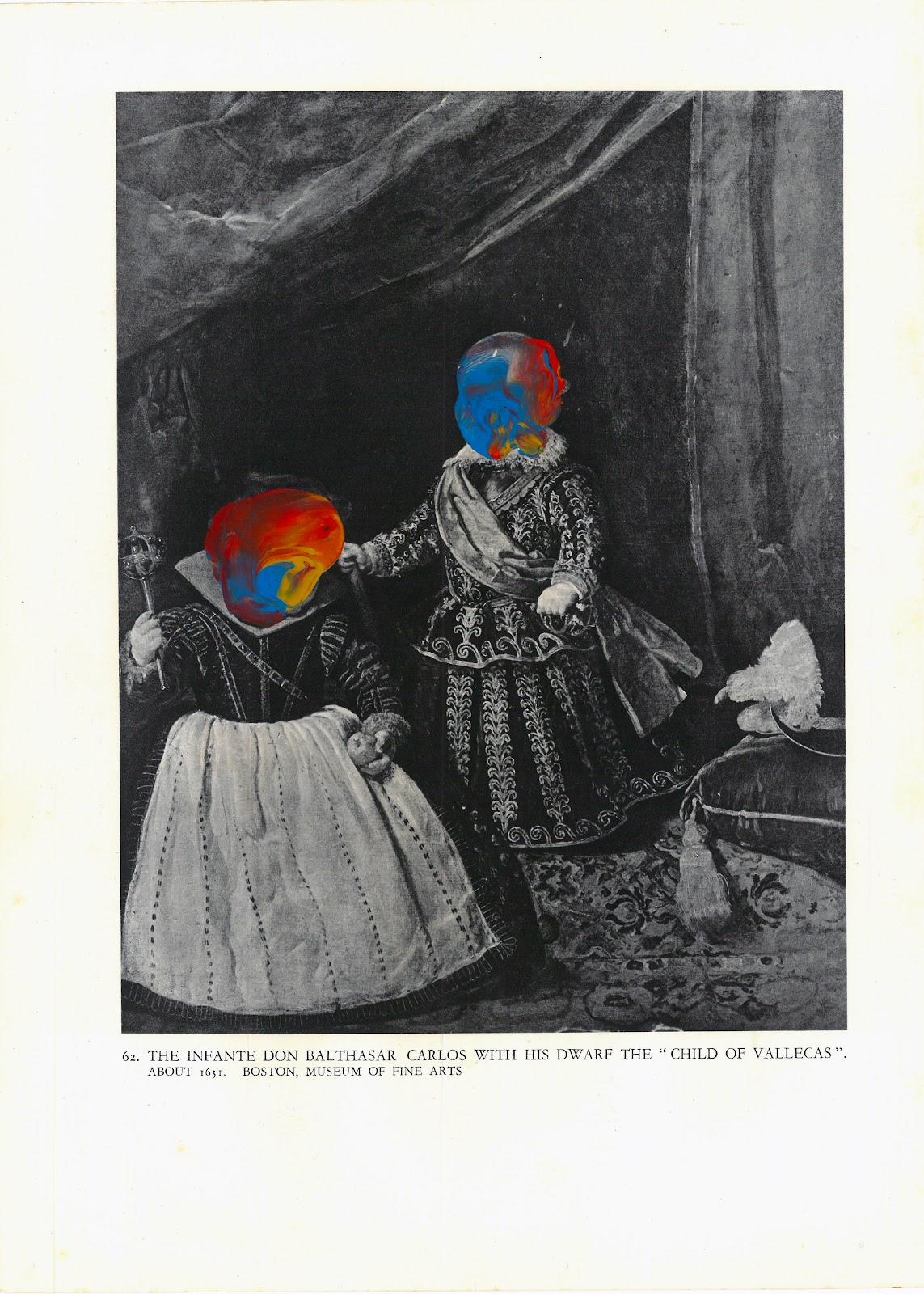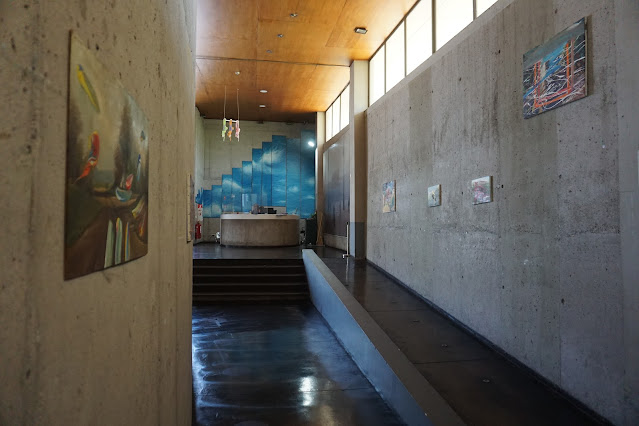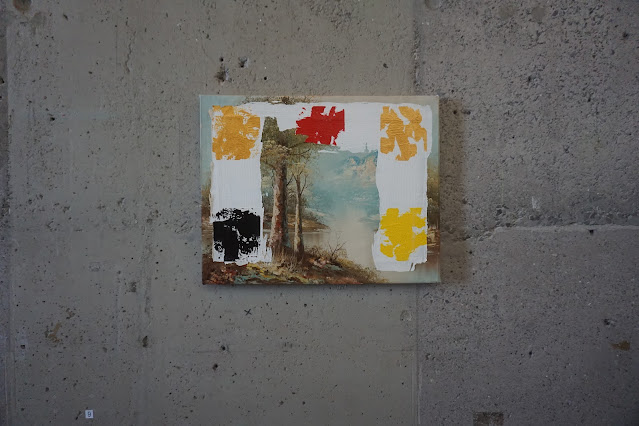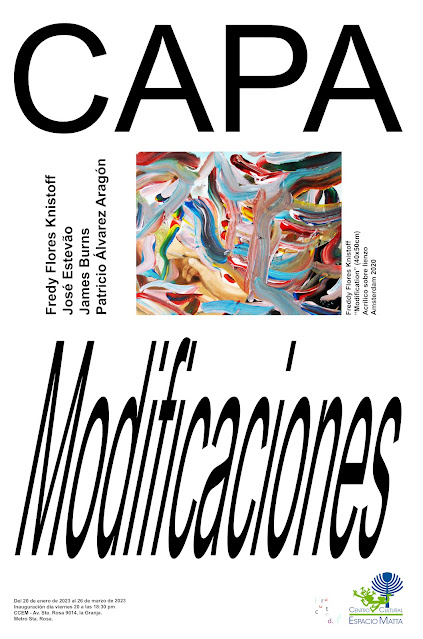 |
| Übermalte Fotografie, Sín titulo, 1999 |
En este post no me quiero detener en la biografía de uno de los artistas más importantes con respecto a lo que significó el desarrollo de las últimas vanguardias alemanas del siglo XX en pintura pero sí resaltar que dentro de su proceso creativo y de investigación G. Richter (Dresden, 1932) siempre fue un referente con respecto al tema que aquí nos interesa que es el de las "Übermalte Fotografien", "Fotografías sobrepintadas" o mejor dicho "Modificaciones" y en alguna de sus múltiples variaciones. Bien inserto en el discurso académico oficial pero si tardíamente y bien relacionado cronológicamente aunque sin ninguna conexión en absoluto, como es el caso de CAPA. Richter comenzó en 1989 una serie de pinturas sobre fotografías muy interesante con materiales también poco comunes como el óleo y la laca. Las fotografías, de medidas estándar 10x15cm, las tomó durante sus viajes, vacaciones, junto a sus amigos o en caminatas con el claro objetivo de pintar sobre ellas. Durante sus largas sesiones de pintura y con el afán de utilizar todo el material que tenia disponible pero siempre con orden. Richter utilizaba un haragán, vulgarmente llamado "cepillo de cristalero" e incluso el mismo "labio de goma" para arrastrar la pintura una vez depositada arbitrariamente en las fotografías. Un acto físico y automático significativo, sí queremos indagar en pintura automática. El efecto que produce este procedimiento de presión y movimiento sobre grandes masas de pintura depositadas en los lienzos o en este caso fotografías se intensificó en "bordes nítidos con aspecto afilado". No hay que olvidar que también además de óleo, la laca, fue otro de los elementos predominante en su obra desde 1970 con sus obras llamadas "Colour Charts" una especie de pinturas que recordaban el viejo arte francés del "cloisonne" inspirado en antiguas joyas de las dinastías Egipcias. Lo novedoso en todo esto, según confesó el mismo artista, fue la combinación de "dos realidades" la del lenguaje fotográfico y la del lenguaje pictórico y de que al contemplar estos trabajos imaginaba como "sí se tratase de un cuento de hadas en el que se creaban personajes verdaderamente extraños en escenarios de la vida cotidiana, como si hubiera creado su propia mitología".
--
In this post I do not want to dwell on the biography of one of the most important artists with respect to the development of the last German avant-garde of the 20th century in painting, but I do want to emphasize that within his creative and research process G. Richter (Dresden, 1932) was always a reference with respect to the theme that interests us here, which is the “Übermalte Fotografien”, “Overpainted Photographs” or rather “Modifications” and in some of its many variations. Well inserted in the official academic discourse but if late and well related chronologically although without any connection at all, as is the case of CAPA. Richter began in 1989 a very interesting series of paintings on photographs with unusual materials such as oil and lacquer. The photographs, of standard measurements 10x15cm, were taken during his travels, vacations, with his friends or on walks with the clear objective of painting on them. During his long painting sessions and with the eagerness to use all the material he had available but always in order. Richter used a loafer, commonly known as a “glazier's brush” and even the same “rubber lip” to drag the paint once it had been arbitrarily deposited on the photographs. A significant physical and automatic act, if we want to investigate automatic painting. The effect produced by this procedure of pressure and movement on large masses of paint deposited on the canvases or in this case photographs was intensified in “sharp edges with sharp appearance”. It should not be forgotten that in addition to oil, lacquer as a predominant element in his work since 1970 with his works called “Colour Charts” a kind of paintings reminiscent of the old French art of “cloisonne” inspired by ancient jewels of the Egyptian dynasties. The novelty in all this, as the artist himself confessed, was the combination of “two realities” that of photographic language and painting and that when he contemplated these works he imagined as if “it were a fairy tale in which truly strange characters were created in scenes of everyday life, as if he had created his own mythology".
 |
| Fotografía de G. Richter tomada en 1984 a Benjamin Katz (fotógrafo aleman) . Bejamin Katz observa el trabajo fotográfico de Richter. |
 |
| Übermalte Fotografie, Sín titulo, 2006 |
Sobre este estudio y gracias a una conversación con uno de sus biógrafos esenciales, el amable D. Markus Heinzelmann, curador de su última exposición en Düsseldorf "Verbörgene Schätze", "Tesoros ocultos de Gerhard Richter", pude entender que este grueso de obras correspondieron justamente a una etapa que comenzó en 1989 y que para mi sorpresa es un ejercicio que Richter ha conservado con el tiempo y retoma cada dos o tres años y me imagino que aún más hoy que este próximo 9 de febrero cumplirá 93 años de edad y ya no creo que trabaje sobre grandes formatos. Eso sí, M. Heinzelmann me dejó claro que este etapa la comenzó con energías y entusiasmo entre 1989 y 1999 aproximadamente para posteriormente enforcarse en un periodo de investigación que el mismo Richter llamo "Abstraktion und Vielfalt" "Diversidad y Abstacción" de pinturas de gran formato y algunas otras de carácter realista, encargos de retratos sobre la cultura alemana y, sobre todo el paisaje alemán o como el lo llama, el corazón de Europa.
--
About this study and thanks to a conversation with one of his essential biographers, the kind D. Markus Heinzelmann, curator of his last exhibition in Düsseldorf “Verbörgene Schätze”, “Hidden Treasures of Gerhard Richter”, I was able to understand that this bulk of works corresponded precisely to a stage that began in 1989 and that to my surprise is an exercise that Richter has retained over time and retakes every two or three years and I imagine that even more today that this coming February 9 will be 93 years old and I no longer believe that he works on large formats. However, M. Heinzelmann made it clear to me that he began this stage with energy and enthusiasm between 1989 and 1999 approximately to later focus on a period of research that Richter himself called “Abstraktion und Vielfalt” “Diversity and Abstraction” of large format paintings and some others of a realistic character, portrait commissions on German culture and, above all, the German landscape or as he calls it, the heart of Europe.
Del mismo modo, Gerhard Richter ha intentado documentar este proceso en un interesantisimo proyecto dónde ha digitalizado gran parte de estos trabajo sobre "Fotografias sobrepintadas" que encontraréis aquí:
In the same way, Gerhard Richter has tried to document this process in a very interesting project where he has digitized most of these works on “Overpainted photographs” that you will find here:
https://www.gerhard-richter.com/de/art/overpainted-photographs
 |
| Übermalte Fotografie, Sín titulo, 2001 |

























.jpg)








.jpg)









